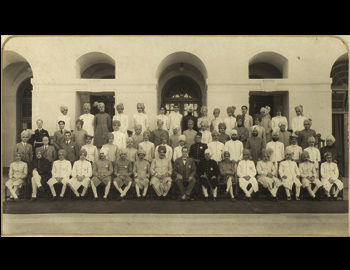

Prior to 1947, hundreds of Princely States existed in India which were not formally ruled by the British, but rather by a local or regional ruler. These vassal states, also called native states, were subject to a subsidiary alliance and the suzerainty or paramountcy of the British Crown. Along with status, size and wealth differences, Princely State coins varied vastly as well. However, not all Princely States issued their own coins. Check out the ones that did:
Continue reading Coins of Indian Princely States – Part I
The Mintage World Team comprises of experts, researchers and writers from the field of Philately, Notaphily and Numismatics who try to shed light on some of the most interesting aspects of coins, banknotes and stamps from not just India but across the globe as well.

Coins are not just pieces of metals used in exchange for goods and services they are a wonderfully useful tool in the archaeologist’s and historian’s toolbox as they instantly provide information for trade, economy, mythology, rulers, military, important events, etc. They are a very authentic source for building up and writing histories. The science that studies these coins is called as Numismatics and those who study or collect coins are called as Numismatists. Interestingly coin collection is one of the foremost celebrated hobbies in the world. And we are sure many of you too have a collection or aspire to start collecting. But are you still struggling with the numismatic terms like Proof? UNC? Reverse Proof? Do you get lost in all these technical numismatic terms? Worry not…We are here to help you with that. So today let’s familiarize ourselves with some basic Numismatic terminology. Continue reading NUMISMATIC TERMINOLOGY
The Mintage World Team comprises of experts, researchers and writers from the field of Philately, Notaphily and Numismatics who try to shed light on some of the most interesting aspects of coins, banknotes and stamps from not just India but across the globe as well.

Elephants play a very important role in many cultures and traditions. But we do not have to go deep into the “cultural” and “religious” significance of these majestic animals to understand why they are such a hit with the public! Just type ‘elephant’ in your Google search and you will find so many adorable videos and images of elephants. Right from the “Manny” of Ice Age (although Manny is a mammoth) to “Snorky” of the Banana Splits Club, our cartoons, movies and Facebook walls are full of cute elephants. Today we find elephants all over the social media, but in the ancient and the medieval times, they adorned various paintings, sculptures and coins! Let’s continue our journey of exploring elephants on Indian coins.
Continue reading Elephants on Indian coins: An overview and history – Part II
The Mintage World Team comprises of experts, researchers and writers from the field of Philately, Notaphily and Numismatics who try to shed light on some of the most interesting aspects of coins, banknotes and stamps from not just India but across the globe as well.

The cute pot-bellied god ‘Ganesha’ is appreciated and worshipped beyond India also. He is popularly known as ‘The Elephant-headed God’ and is usually a favourite god of children. The earliest reference to Ganesha is found in Rig Veda. It is believed that Ganesha was born from the dirt of Parvati. He is worshipped in every corner of India, but do you know that he is worshipped beyond India too? Not only that, these countries even have Ganesha on stamps!
Continue reading Bappa Beyond India: Ganesha on Stamps
The Mintage World Team comprises of experts, researchers and writers from the field of Philately, Notaphily and Numismatics who try to shed light on some of the most interesting aspects of coins, banknotes and stamps from not just India but across the globe as well.

Banavasi is a tiny town on the border of north Karnataka and Shimoga districts. It is mentioned in inscriptions and literature as Vanavasa, Vanavasaka, Vanavasi, Banavase, and Banavasi. It is stated in Mahavamsa that Asoka’s emissary Buddha Rakshita was deputed to Vanavasi. Banavasi has grown around the Madhukeshwara temple built in the 9th century, dedicated to Lord Shiva. It also appears to have been the southern headquarters of the Satavahanas. The town was the capital of the Chutus and the Kadamba rulers.
Continue reading Coins of the Kadambas of Banavasi
The Mintage World Team comprises of experts, researchers and writers from the field of Philately, Notaphily and Numismatics who try to shed light on some of the most interesting aspects of coins, banknotes and stamps from not just India but across the globe as well.